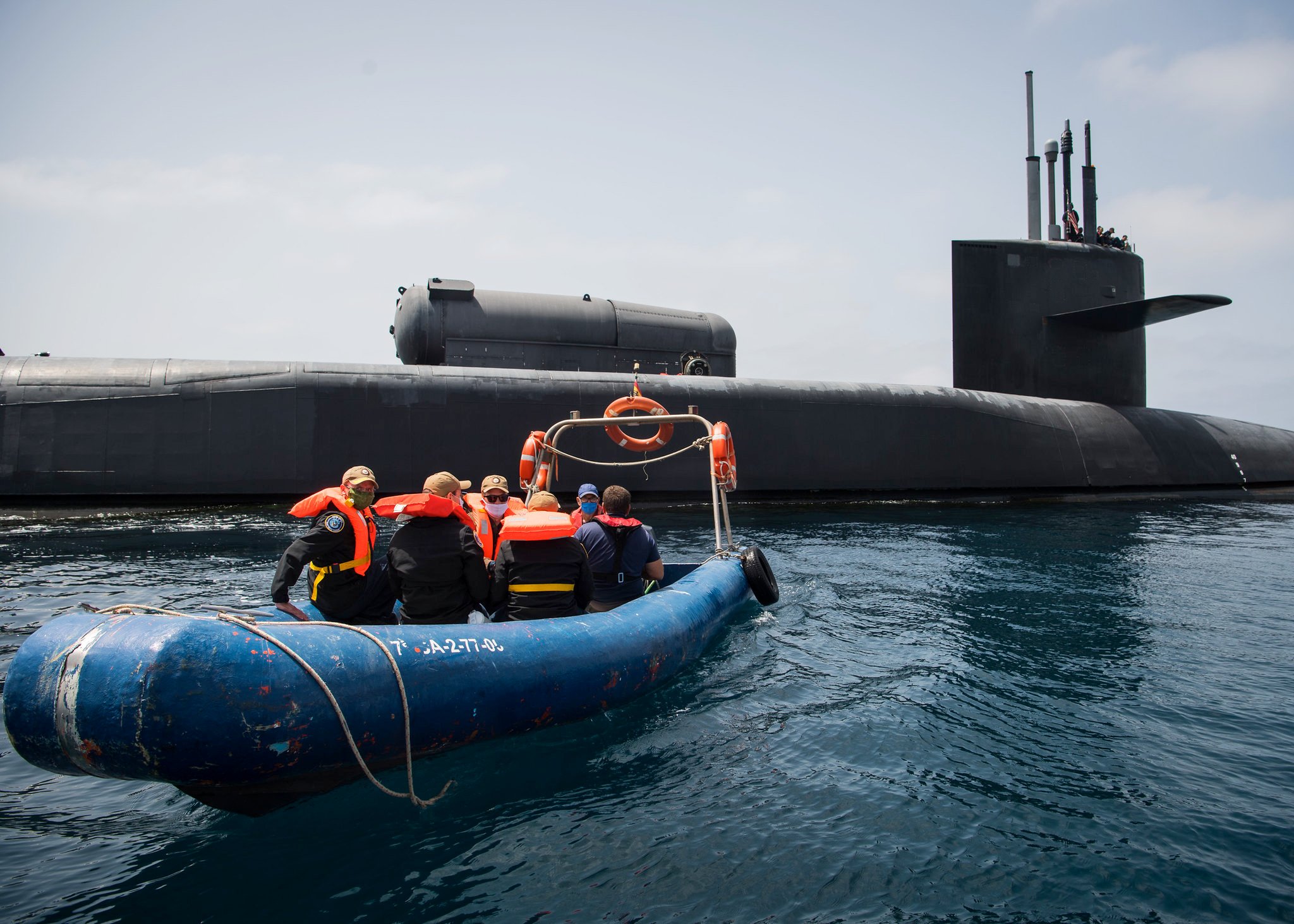The Navy's Ohio-Class SSGNs Have 'Unprecedented Strike Capability'
The USS Florida (SSGN-78), an Ohio-class guided-missile submarine, recently completed a record-breaking 727-day deployment across the 5th, 6th, and 7th Fleet areas of operations, returning to Naval Submarine Base Kings Bay, Georgia.
Summary and Key Points: The USS Florida (SSGN-78), an Ohio-class guided-missile submarine, recently completed a record-breaking 727-day deployment across the 5th, 6th, and 7th Fleet areas of operations, returning to Naval Submarine Base Kings Bay, Georgia.

-The submarine, one of four Ohio-class ballistic missile submarines converted to carry conventional cruise missiles, operated with two alternating crews, maximizing its strategic availability.
-Over the deployment, the USS Florida conducted vital national security missions, traveling over 60,000 nautical miles and visiting ports in Greece, Guam, Diego Garcia, and the United Kingdom. Despite the SSGNs' proven capabilities, the U.S. Navy plans to retire these submarines between 2026 and 2028.
The Ohio-Class SSGN Submarines are Like No Other in the U.S. Navy
Life on a submarine is likely never easy, which is why the United States Navy's Ohio-class boats are assigned two crews that allow the subs to increase their deployments and average sixty-six percent of their time at sea. The Ohio-class guided-missile submarine USS Florida (SSGN-78) recently completed a 727-day deployment to the 5th, 6th, and 7th fleet areas of operations, the United States Navy announced Wednesday.
The Ohio-Class SSGN returned to Naval Submarine Base Kings Bay, Georgia, late last month.
SSGN-78, one of the four Ohio-class ballistic missile submarines (SSBNs) converted to an SSGN, was assigned to Commander, Submarine Group Ten, and began her deployment in August 2022. Over the past two years, the boat conducted five crew swaps. According to the U.S. Navy, employing two crews – each with its own captain – maximizes the "strategic availability, reduces the number of submarines required to meet strategic requirements, and allows for proper crew training, readiness, and morale."
"We have demonstrated the versatility of the SSGN platform to operate anywhere at any time," said Capt. Peter French, blue crew commanding officer. "We operated in several different oceans. It's very uncommon for East Coast submarines to deploy to the West Coast, but we managed to do an exceptional job completing the mission."
Ohio-Class: Conversion of the SSBNs to SSGNs
The Ohio-class SSBNs were developed to serve as a virtually undetectable undersea launch platform for the U.S. military's intercontinental missiles, and the boats became a key component of America's nuclear triad during President Ronald Reagan's time in office.
As the largest subs ever constructed for the U.S. Navy, and the third-largest submarine ever built, the boats were designed to carry the concurrently developed Trident submarine-launched ballistic missiles. A total of eighteen of the Ohio-class submarines were constructed by the Electric Boat Division of General Dynamics between 1981 and 1997.
According to the Strategic Arms Reduction Treaty (START II), which was agreed in June 1992, the number of U.S. Navy strategic missile submarines was limited to fourteen beginning in 2002. Rather than simply phasing out or decommissioning four of the boats, the U.S. Navy opted to convert them to conventionally armed nuclear-powered cruise missile submarines (SSGNs).
Electric Boat was awarded a contract in September 2002 to convert the four oldest of the class including USS Ohio (SSBN-726), Michigan (SSBN-727), Florida (SSBN-728), and Georgia (SSBN-729); and each of those boats were refitted with vertical launching systems, which allow the submarines to carry up to 154 Tomahawk TLAM (land attack) or Tactical Tomahawk (block IV) missiles. According to Naval Technology, the conversion also allowed the nuclear-powered SSGNs to deploy special operations forces via Northrop Grumman's Advanced SEAL Delivery System (ASDS), while the boats were also fitted with a mission control center. The modifications required converting two of the twenty-four vertical payload tubes into a lockout, which could be used by special operators such as the Navy SEALs.
The SSGN Program Office was able to refuel and convert the four ballistic missile subs (SSBN) to SSGNs in just over five years, and more importantly for U.S. taxpayers for considerably less cost and at less time than it would take to build a new platform. All four of the vessels had completed their conversion by December 2007.
Despite the proven capabilities of the SSGNs, the U.S. Navy has announced plans to retire the four converted Ohio-class boats between 2026 and 2028.
Recent Deployment of SSGN-728
Exactly where SSGN spent her time at sea hasn't been disclosed, but the U.S. Navy only confirmed, "The crews conducted vital missions crucial to national security, enhancing operational capabilities and reinforcing deterrence effort, while traveling more than 60,000 nautical miles. The crews also had the opportunity to visit Greece, Guam, Diego Garcia, and the United Kingdom, as part of routine port calls."

At a media round table that included international military analyst firm Janes on July 25, Captain French praised the SSGN's "unprecedented strike capability," and acknowledged that "Missions change depending on what the combatant commander needs day to day."
Author Experience and Expertise: Peter Suciu
Peter Suciu is a Michigan-based writer. He has contributed to more than four dozen magazines, newspapers, and websites with over 3,200 published pieces over a twenty-year career in journalism. He regularly writes about military hardware, firearms history, cybersecurity, politics, and international affairs. Peter is also a Contributing Writer for Forbes and Clearance Jobs. You can follow him on Twitter: @PeterSuciu. You can email the author: [email protected].
Image Credit: Creative Commons.


